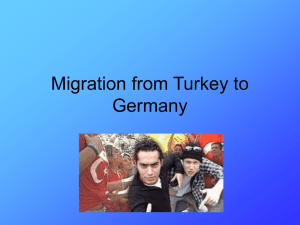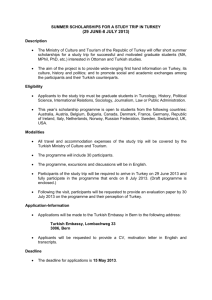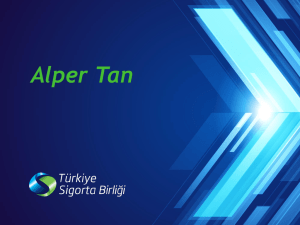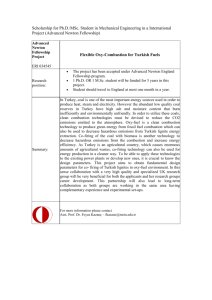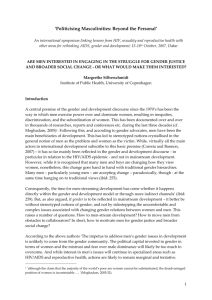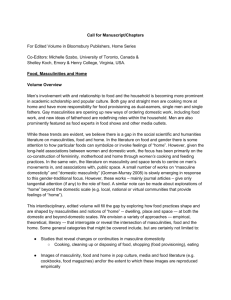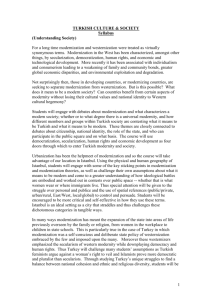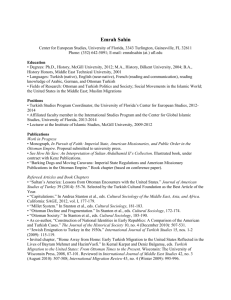WEEK4-Akyuz
advertisement
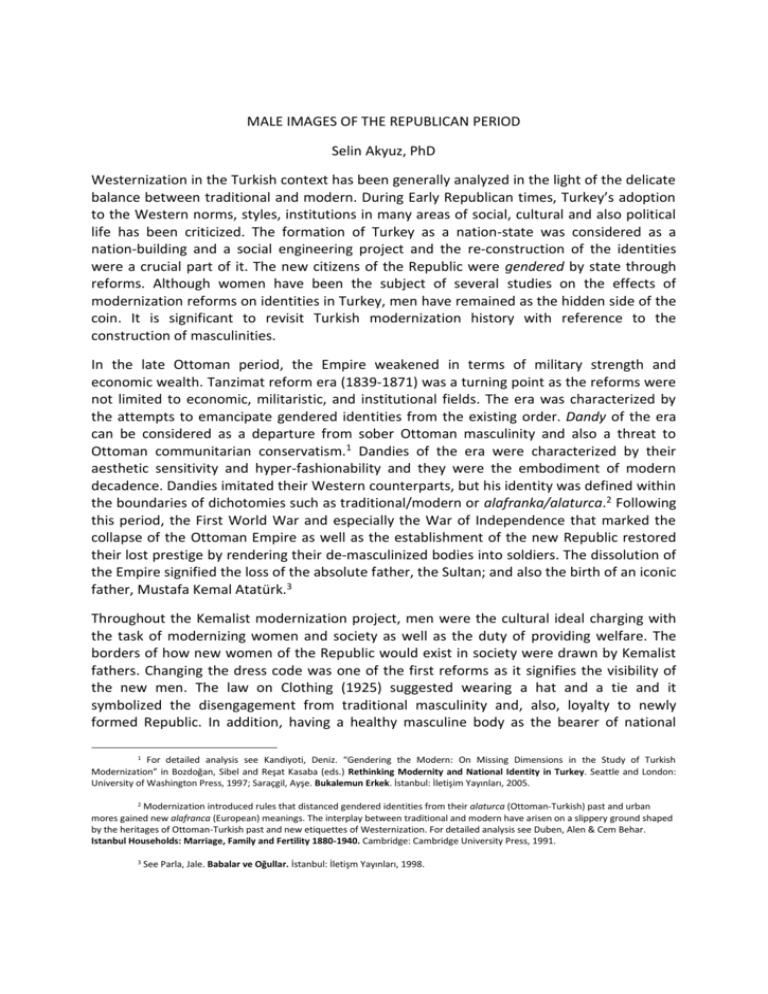
MALE IMAGES OF THE REPUBLICAN PERIOD Selin Akyuz, PhD Westernization in the Turkish context has been generally analyzed in the light of the delicate balance between traditional and modern. During Early Republican times, Turkey’s adoption to the Western norms, styles, institutions in many areas of social, cultural and also political life has been criticized. The formation of Turkey as a nation-state was considered as a nation-building and a social engineering project and the re-construction of the identities were a crucial part of it. The new citizens of the Republic were gendered by state through reforms. Although women have been the subject of several studies on the effects of modernization reforms on identities in Turkey, men have remained as the hidden side of the coin. It is significant to revisit Turkish modernization history with reference to the construction of masculinities. In the late Ottoman period, the Empire weakened in terms of military strength and economic wealth. Tanzimat reform era (1839-1871) was a turning point as the reforms were not limited to economic, militaristic, and institutional fields. The era was characterized by the attempts to emancipate gendered identities from the existing order. Dandy of the era can be considered as a departure from sober Ottoman masculinity and also a threat to Ottoman communitarian conservatism.1 Dandies of the era were characterized by their aesthetic sensitivity and hyper-fashionability and they were the embodiment of modern decadence. Dandies imitated their Western counterparts, but his identity was defined within the boundaries of dichotomies such as traditional/modern or alafranka/alaturca.2 Following this period, the First World War and especially the War of Independence that marked the collapse of the Ottoman Empire as well as the establishment of the new Republic restored their lost prestige by rendering their de-masculinized bodies into soldiers. The dissolution of the Empire signified the loss of the absolute father, the Sultan; and also the birth of an iconic father, Mustafa Kemal Atatürk.3 Throughout the Kemalist modernization project, men were the cultural ideal charging with the task of modernizing women and society as well as the duty of providing welfare. The borders of how new women of the Republic would exist in society were drawn by Kemalist fathers. Changing the dress code was one of the first reforms as it signifies the visibility of the new men. The law on Clothing (1925) suggested wearing a hat and a tie and it symbolized the disengagement from traditional masculinity and, also, loyalty to newly formed Republic. In addition, having a healthy masculine body as the bearer of national 1 For detailed analysis see Kandiyoti, Deniz. “Gendering the Modern: On Missing Dimensions in the Study of Turkish Modernization” in Bozdoğan, Sibel and Reşat Kasaba (eds.) Rethinking Modernity and National Identity in Turkey. Seattle and London: University of Washington Press, 1997; Saraçgil, Ayşe. Bukalemun Erkek. İstanbul: İletişim Yayınları, 2005. 2 Modernization introduced rules that distanced gendered identities from their alaturca (Ottoman-Turkish) past and urban mores gained new alafranca (European) meanings. The interplay between traditional and modern have arisen on a slippery ground shaped by the heritages of Ottoman-Turkish past and new etiquettes of Westernization. For detailed analysis see Duben, Alen & Cem Behar. Istanbul Households: Marriage, Family and Fertility 1880-1940. Cambridge: Cambridge University Press, 1991. 3 See Parla, Jale. Babalar ve Oğullar. İstanbul: İletişm Yayınları, 1998. reforms was also among the expectations from the modern Turkish man. As culture of nationalism has been constructed to emphasize masculine themes such as honor, patriotism, bravery and duty, the revolutionist men of the Republic would have to demonstrate that they were the protectors of society. Furthermore, going to balls, theaters were all considered as the symbols of the modern daily life. As modernity has always been a reference point for the construction of masculinities in Turkey, militarism is also constitutive. Militarism is a multifaceted network highlighting metaphors and symbols that provide a sense of manliness. The internalized understanding of ‘every (male) Turk is born soldier’ is the illustration of a historically constructed reality. Going to the army and being soldiers are markers of being real men in Turkish culture. Mehmetçik as an unknown soldier has been idolized even if he does not die for the country. In 2000s Turkey, related to widespread social changes and the effects of globalization, the boundaries of masculinity are being defined by multiplicities of identities. Although some stereotypes of Turkish masculinity such as kabadayı, namely tough uncle, and Mehmetçik as the protector of social order have been ossified in popular culture, Turkish society itself fabricates new forms of masculinities through its interaction with global images and identities. Class, ethnicity and most importantly religion have also been integrated as determining dynamics into the construction of masculinities. The power interplay between hegemonic masculinity and other masculinities have arisen on a slippery ground shaped by the heritages of Turkish culture, and currently, secularist/Islamist cleavages.


